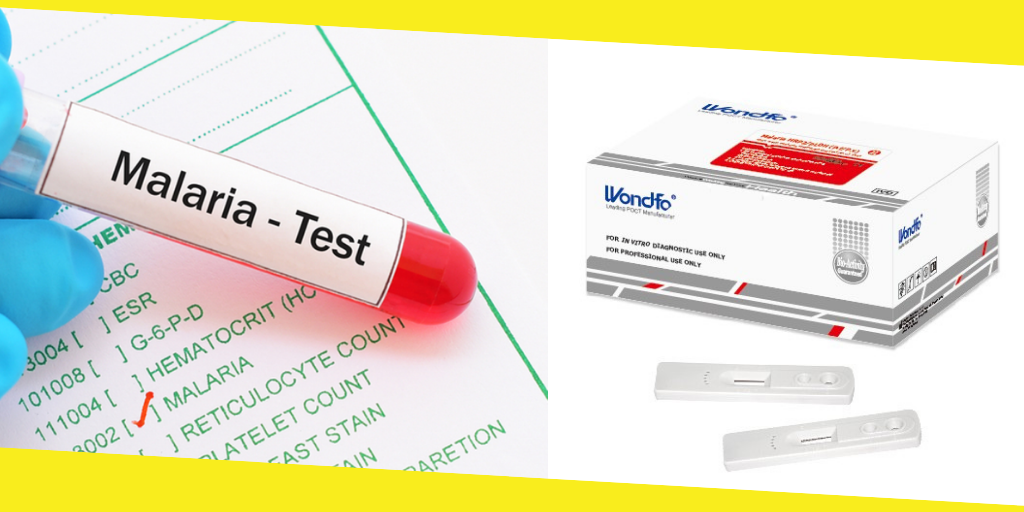Knowledge About Malaria and Malaria RDTs
This post was last updated on May 6th, 2020

Malaria is a severe and sometimes life-threatening blood disease that is caused by the Plasmodium parasite. It is transmitted by the Anopheles mosquito, a particular type of mosquito which is usually found in tropical and sub-tropical regions. For more interesting information, you can check out this article that talks about mosquito facts.
In the early 1950s, malaria was almost eliminated in many countries thanks to advances in treatment, but people were still infected when traveling to malaria-endemic areas. It killed more than 445,000 people a year, many of whom were children in Africa, according to WHO.
So, it’s necessary for us to know some common sense about Malaria and its diagnosis tools.
-
Contents
ToggleTypes of Malaria
There are five types of malaria, which are known to infect humans in the world. Two of them are considered the most common and dangerous:
- Plasmodium falciparum (P.f) This is the most lethal and perilous parasite that causes most malaria-related infections and deaths in the world. It multiplies so quickly that it will cause severe blood loss and even affect human’s brain and central nervous system.
- Plasmodium vivax (P.v.) Plasmodium vivax has the most extensive distribution around the world and most of infections in the world are caused by it. It seldom causes death, while it will remain dormant in the liver and become active, infecting people’s blood months or years after an infected mosquito bites a person.
-
Malaria RDTs
For malaria, there are many diagnostic methods, among which Malaria RDTs is most accessible for us. It assists in the diagnosis of malaria by providing evidence of the presence of malaria parasites in human blood. RDTs is an alternative to diagnosis based on clinical grounds or microscopy, mainly where good quality microscopy services cannot be readily provided.
Considerations you should focus on for choosing a Malaria rapid diagnostic test
- The plasmodium species to be detected ( non-falciparum species, pan-specificand Plasmodium falciparum only);
- Temperature stability and shelf life in intended conditions of use and storage;
- Easy to use, including the format of the test (e.g., dipstick, cassette and card);
- Requirement for post-treatment testing of patients;
- Good performance in WHO Malaria RDT Product Testing;
- Sensitivity and Specificity.
- Cost of the tests
Wondfo Malaria RDTs in the market could speak for that. Its one step Malaria test is designed as a rapid self-performing, qualitative, two site sandwich immunoassay for the diagnosis of malaria infection. The assay is intended for using patients’ whole blood which is from a finger-prick. It’ll just take 15-30 minutes to get the result, which is quite easy to read. This test method is suitable in those places where a microscope is not available.
Malaria RDTs may be useful in:
- Assisting in diagnosing for the place where microscopy-based diagnosis may be unavailable;
- Remoting diagnosis for organized workforce that enters malaria-endemic areas like military and mining companies;
- Outbreak Control, Investigation and parasite prevalence surveys.
What you should further know is that malaria can become a severe disease that causes death rapidly after getting the mosquito bite. Most people suffer from headache, sweating, chills, fever, vomiting and so on. As there is no combination of symptoms that can accurately distinguish malaria from other diseases. The most necessary way for you and your doctor to identify malaria is to have a test. If there is any suspicion of the disease, the test should be performed immediately.
Malaria RDTs’ Importance in Diagnosis and Treatment
The WHO strongly recommends timely diagnosis in all patients suspected of malaria before treatment. Because early diagnosis is critical to help treat and control the disease.
Rapid-diagnostic tests (RDTs) is an essential kind of early diagnosis method for malaria. It is most likely to dramatically improve the quality of management of the spread of the disease. RDTs is relatively simple to perform compared to other diagnosis methods; besides, it provides results quickly and requires limited training.
For the people in remote areas that are not accessible to microscopic laboratory testing, RDTs offers an effective alternative way to microscopy.
Learn more by visiting: https://en.wondfo.com.cn/product/malaria-hrp2p-f/
Recommended For You
Key Signs In Life As To When You May Need To Call An Ambulance
Most Inside
Most Inside offers high-quality recommendations and valuable updates to enhance all aspects of your life, providing premium guidance and enriching experiences.




